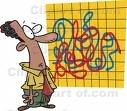You have to do both or they'll have radically different compression ratios, as well as the possibility of piston/valve/head interference.
When a crank is "stroked" you are moving the centerline of the rod bearing farther away from the centerline of the crank bearings. This creates a longer stroke, and more volume in the cylinder at the bottom of the stroke because it is now farther from the head, hence the increase in displacement.
Conversely at the top of the stroke the piston is also closer to the head, which in conjunction with the greater volume of compressed gasses creates higher compression. To lower compression and avoid piston/valve/head contact, the piston wrist pin location must be closer to the top of the piston, which lowers the piston crown when at the top of the stroke, and reduces compression, as well as fixing the interference problem.
The advantage of stroked motors is higher torque and HP than a stock engine, (you get a bit more power than you would by boring out the cylinders to an equal displacement).
The disadvantage is higher piston speeds as they now have to move a greater distance for each revolution of the crank, creating more inertia, and lowering the redline of the motor.
Hope that explains things...
When a crank is "stroked" you are moving the centerline of the rod bearing farther away from the centerline of the crank bearings. This creates a longer stroke, and more volume in the cylinder at the bottom of the stroke because it is now farther from the head, hence the increase in displacement.
Conversely at the top of the stroke the piston is also closer to the head, which in conjunction with the greater volume of compressed gasses creates higher compression. To lower compression and avoid piston/valve/head contact, the piston wrist pin location must be closer to the top of the piston, which lowers the piston crown when at the top of the stroke, and reduces compression, as well as fixing the interference problem.
The advantage of stroked motors is higher torque and HP than a stock engine, (you get a bit more power than you would by boring out the cylinders to an equal displacement).
The disadvantage is higher piston speeds as they now have to move a greater distance for each revolution of the crank, creating more inertia, and lowering the redline of the motor.
Hope that explains things...





 Not on my acronym list.
Not on my acronym list.



 Just it's big brother to the XS.
Just it's big brother to the XS.
Comment